Field Guide to Angry Birds.
Known Species:
The Flock
• Red Bird Red(NorthernCardinal)
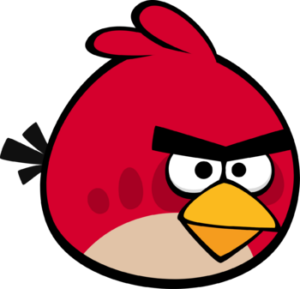
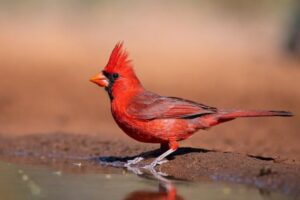
Angry Bird 1, Striking and familiar backyard bird throughout most of eastern North America; also occurs in the southwestern U.S. and fairly extensively in Mexico. Crest, large red bill, and long tail render this species distinctive even with a poor view. Male is entirely red with a black face. Female is brownish overall with redder wings and tail. Usually seen in pairs or small groups near dense cover, especially thickets near forest edges. Frequently visits bird feeders. Listen for high-pitched metallic chips and series of loud, sweet whistles.
•Blue Birdsor The Blues-Jay, Jake, and Jim(Eastern Bluebirds)
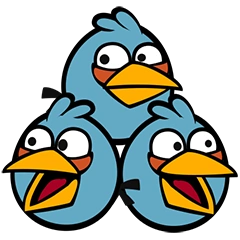
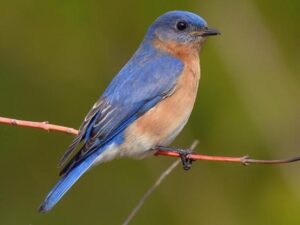
• Yellow Bird-Chuck (Canary)
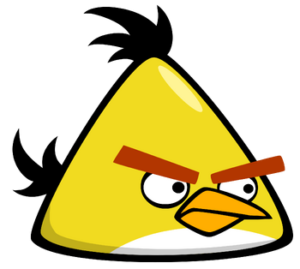
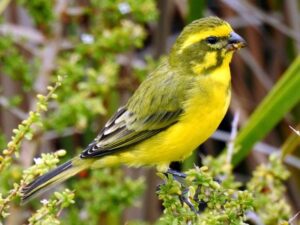
Angry bird 3, a large canary with different-looking males and females. The male has bright yellow underparts, yellow-green upperparts, and a well-marked face pattern. The female is drab gray-brown with streaky underparts, yellowish edges of the wing feathers, and a yellow rump. Pairs and small groups occupy dry rangelands including coastal scrub, Karoo, and arid thornveld, where they are resident and nomadic, moving when food becomes scarce. The larger Brimstone Canary has a chunkier bill than Yellow Canary and prefers moist coastal thickets and woodland.
•Black Bird or Bomb Bird Bomb (Loon)
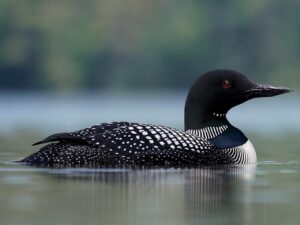
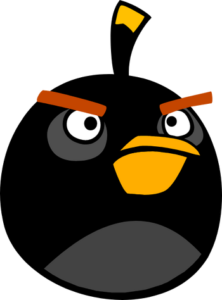
Angry Bird 4, Common Loons are a classic bird of the North Woods lakes. They are excellent indicators of water quality as they require crystal-clear lakes (which makes iteasier for them to see prey underwater) with abundant populations of small fish. Lakes with coves and islands are preferred as they provide cover from predators while resting and nesting. They also require lakes with enough surface area for their flapping-and-running takeoffs across the water. In their winter range along ocean coasts, they occur fairly close to shore and in bays and estuaries. They are only rarely found more than several miles offshore. Some Common Loons winter inland, on large reservoirs and slow-moving rivers. Common Loons that migrate across interior North America find large lakes and rivers to move between on their way north and south.
•Angry Bird 5: Green Bird or Boomerang Bird-Hal(Emerald Toucanet)

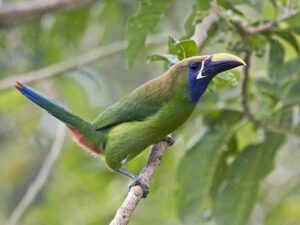
•Angry Bird 6: Orange Bird Bubbles (Jamaican Oriole)
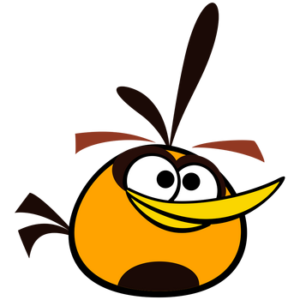
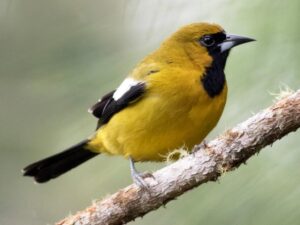
A fruit-loving inhabitant of woodlands and gardens. Adult is yellow (often tinged green or orange), sports a black beard, and has very large white wing patches covering half of the otherwise black wing. Immatures look similar, but they have two broads white wingbars instead of a white patch. Immature male Orchard Oriole looks somewhat similar, but it is smaller and lacks the bold white wing markings seen on Jamaican Orioles. Songs include a rapid series of rich, whistled, and mostly down-slurred phrases and “cheat-you, cheat-you, cheat-you, cheat-you, cheat.”(https://ebird.org/species/jamori1/)
•Angry Bird 7: Pink Bird – Stella (Galah)
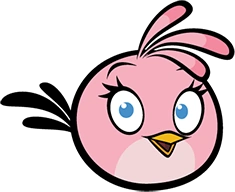
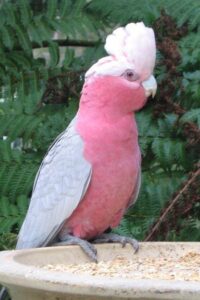
•Angry Bird 8: Blue Terence or Big Blue Birdor Big Blue Brotherbird – Tony (Blue Tanager)
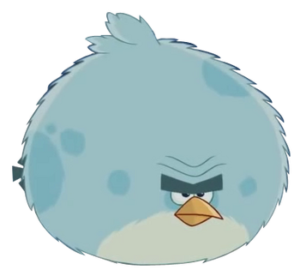
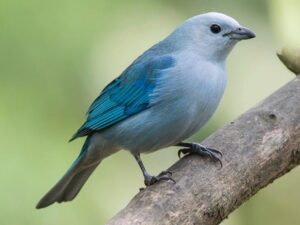
Common and widespread powder blue-gray bird of open and semi-open areas with larger trees and hedges, towns, villages, and gardens in tropical and subtropical regions. Mainly feeds at mid-upper levels in trees, eating fruit, and perches readily on phone wires. Rather plain but distinctive appearance, with beady dark eye and fairly stout bill. Populations east of the Andes in South America have broad white wing-bars and look very different.
Angry Bird 9: Grey Bird or Silver Bird – Silver (Peale’sFalcon)
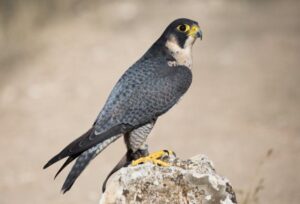
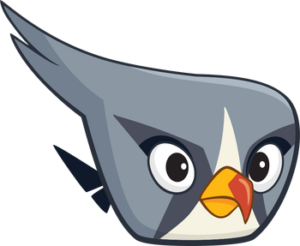
•Angry Bird 10: Judge- Judge Peckinpah (Great Grey Owl)
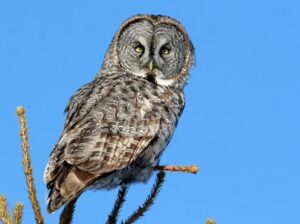
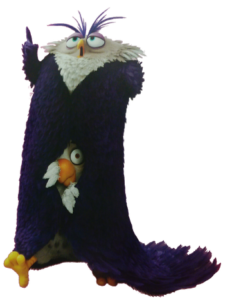
In Canada, Great Grays spend the year in dense, wet evergreen forests of the far north, also known as taiga, where they hunt in meadows, bogs, or other open areas with a few scattered trees. In the United States, they use pine and fir forests adjacent to montane meadows between 2,500 and 7,500 feet. In California and Oregon during the winter months, owls often move downslope into oak woodlands and lower elevation mixed deciduous and evergreen forests.(https://www.allaboutbirds.org/guide/Great_Gray_Owl/lifehistory)
•Angry Bird 11: Sneezy Bird – Cyrus (Gray Cheeked Thrush)
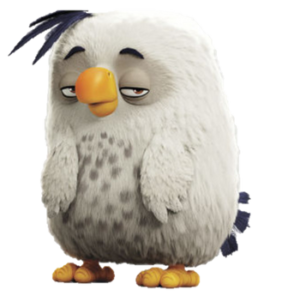
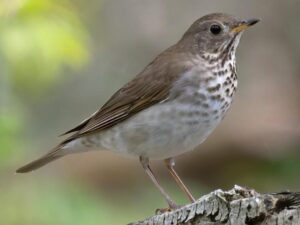
Gray-cheeked Thrushes nest from easternmost Russia, across Alaska, and throughout northern Canada, mostly in habitats where the boreal forest (taiga) begins to give way to tundra. In Alaska and Russia, the subspeciesaliciaehas adapted to a great variety of shrubby and open wooded habitats, among them thickets of alder and willow along rivers and bogs, spruce forests near timberline, and in shrubbery in open woodlands, below cottonwoods, on hillsides, and on glacial moraines. Here, the species avoids areas with only low shrub cover (under 3 feet) but thrives in open coniferous forests with a well-developed shrub layer of dwarf birch, currant, rose, raspberry, blueberry, or similar understory plants.(https://www.allaboutbirds.org/guide/Gray-cheeked_Thrush/lifehistory)
•Angry Bird 12: Funny Bird – Mime (Zebra Finch)
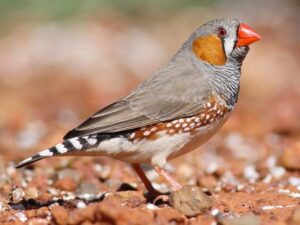
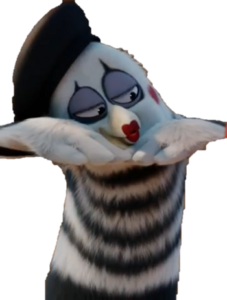
•Angry Bird 13: Mighty Eagle (Eagles)
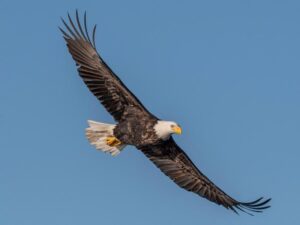
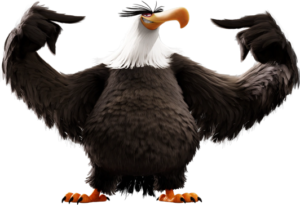
Majestic adults have blackish-brown body with white head and tail. Several stages of immature plumages aren’t quite as majestic, from fully dark brown tomessy and mottled with large patches of white. Look especially for white mottling on the belly on immatures. Scavenges and hunts near bodies of water. Soars with wings flat, like a large, dark plank. Head appears large in flight; projects far in front of wings. Surprisingly weak-sounding vocalization is a series of high-pitched whistles.
